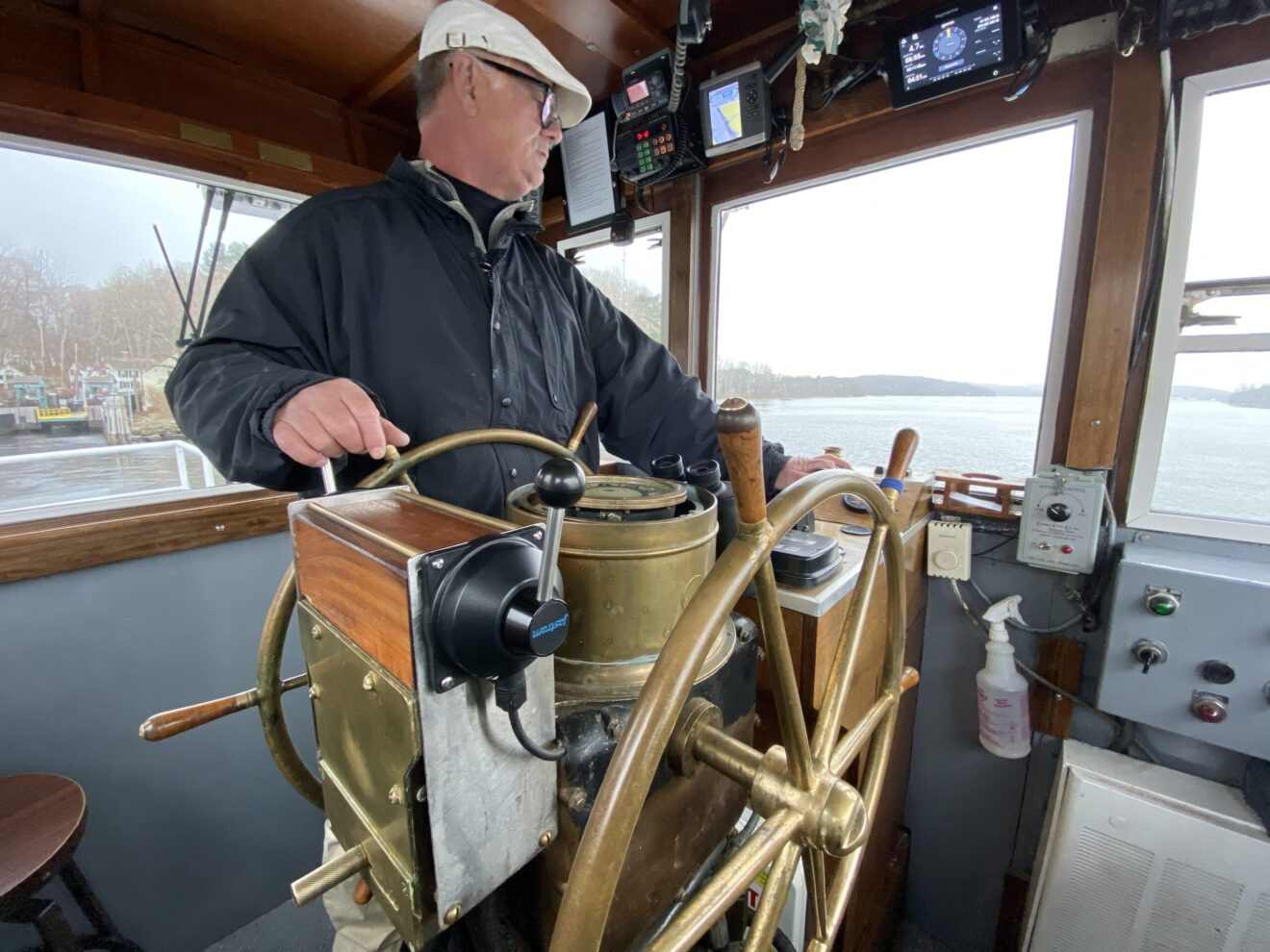It ended tranquilly, with a gentle bump in the night of boat against wooden pier.
When Chester-Hadlyme Ferry Captain John Marshall nosed the vessel into the Chester landing as 7 p.m. approached Tuesday, it marked not only the boat’s last trip of the season, but was the soon-to-retire Marshall’s final crossing of the Connecticut River that he’d made countless thousands of times in his 22 years at the helm.
CT Examiner spent Marshall’s last few hours on the historic ferry with him as he spoke about his unusual career, the boat that became his second home, and his more than two decades observing life on the river where the ferry has operated for 250 years.
John Marshall became a ferry captain after working 20 years as a commercial fisherman in Alaska while living in Seattle, where his merchant-marine father Stanley split his time with his home in Old Saybrook.
“If the shipping was good in New York we’d stay in Connecticut,” Marshall recalled, noting that his brother Tom is a veteran tugboat captain in New York. “If it was bad we’d move to Seattle.”
His transition from fishing to commanding a state Department of Transportation ferry, he said, was primarily due to his growing family obligations.
“How could I justify going out to sea as a merchant marine with three kids? Don’t get me wrong – I tried,” he said with a chuckle. “The advantage of doing this is that you get to go home every night.”
Home is in Hadlyme, less than a couple miles away from the ferry landing that sits below the landmark Gillette Castle – a star attraction for ferry-goers.
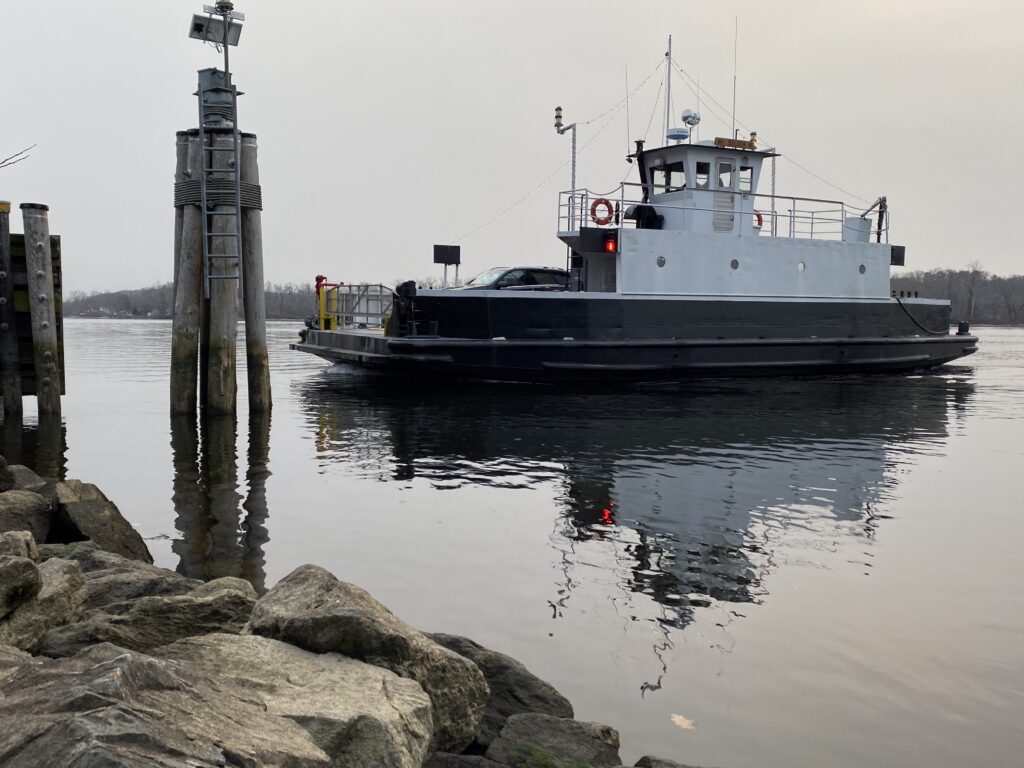
The boat is named the Selden III, after a founding family in the area also memorialized by state-owned Selden Island just south of the river crossing.
It was built in 1950 and was designed by Winthrop Warner of Middletown, whose name is etched on a small brass plaque high on the ceiling of the boat’s tiny wheelhouse.
“He was really kind of a famous guy,” said Marshall, who is clearly well-schooled on the history of the ferry that was first launched in 1769 as a flat-bottomed scow propelled by men with wooden poles.

Open on both ends in order to board vehicles, the Selden III features two facing ships’ wheels and other dual controls that allow Marshall to simply switch ends of the wheelhouse for each leg of the one-third mile trip across the river.
Space in the wheelhouse is so tight that a visitor has to step out to allow Marshall to move to the opposite side.
On a typical day, he says, he logs perhaps 120 one-way trips across the river.
The repetition, especially on a calm day like this one where the current is not a big issue, can be a challenge.
“You’ve got to be careful because you can become complacent,” he said as he transported a steady flow of cars paying five dollars each for the trip. “So you’ve got to pay attention because you’re carrying very valuable cargo. And as easy as it is to make this run, it’s just as easy to have something go really wrong.”

The Selden III is not overly large, Marshall said, and is equipped with relatively small propellers and rudders which can make navigation difficult in certain conditions.
So instead of taking a straight line across the river when the current or wind is particularly strong, he’ll make a single zig-zag across the channel and then angle the boat into the landing.
“If I have heavy flow from the north like during the freshet from the snowmelt I’m going to go to the south a little bit and then come into the landing against the current – it gives you a lot more control,” he explained. “If you’re not propelling you don’t have any control over it.”
The ferry runs seven days a week from April through November, generally from 7 a.m. to 7 p.m.
Closings are rare, and are usually due to a lightning storm or high water that makes it impossible for the ferry to nose under the steel-grid loading ramps on either side.
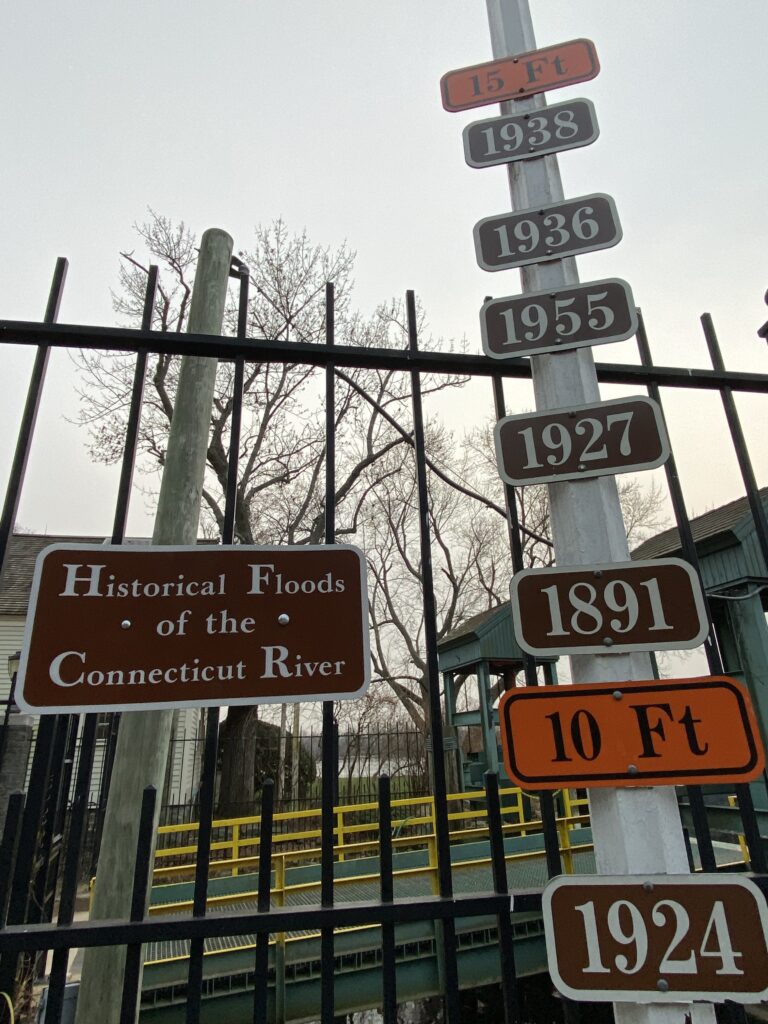
Marshall’s attire – a light jacket and pants with a white newsboy cap on his head – seems better suited for a day of casual sailing than for a boat Captain on a major river.
The clothing, he says, reflects his approach to a job and title that would seem to lend itself to a more officious look and bearing.
“I’m not a big shot,” he said. “I’m just a guy here driving the boat back and forth across the river.”
The trip usually takes about five minutes, but may be double that if Marshall decides to give passengers more time to take in the experience and the view.
“It’s majestic, it’s beautiful, it’s gorgeous,” he said. “I’ve been doing this for 22 years and probably at least once a day I still say ‘Wow!’ So sometimes you just have to slow down to let people get out of their cars so they can take pictures.”
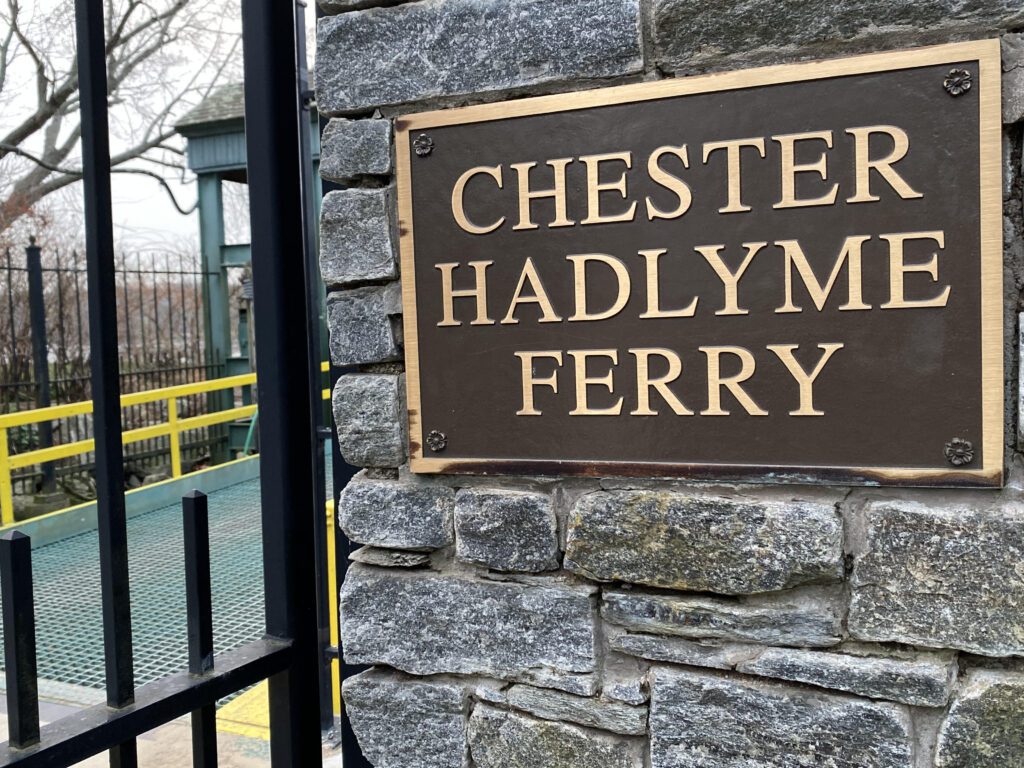
And even on this damp, windy and chilly afternoon that so quickly turned to dusk, many passengers were not shy about taking in the ride from the open deck.
Other than some impatience from regular commuters or others in a particular hurry, Marshall said, the ride seems relaxing and even therapeutic for most.
“People come on the ferry and are genuinely happier than before they got on,” he said. “Maybe it gives them a different perspective. I see couples come on board and embrace because they’re so thrilled.”
Beside the spectacular view of the river itself and of Gillette Castle on a high ridgeline in Hadlyme, the area’s resurgent wildlife is a main draw.
“We see eagles, heron, egrets, mink, beaver, fish jumping – you name it,” Marshall said. “It wasn’t always like that. Everything has made a big comeback in this river in the last 15-20 years.”
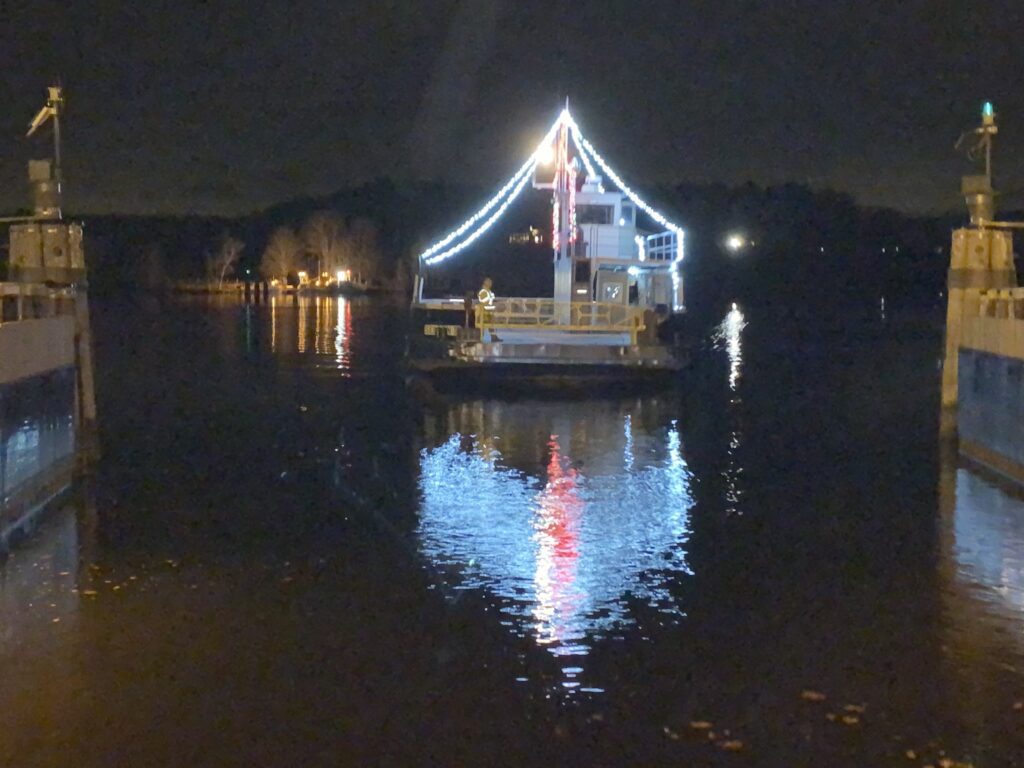
As darkness falls on Marshall’s final hours on the ferry, he says he hasn’t been that emotional about giving up what has become a passion as much as a job for more than two decades.
“I’m not a sentimental person,” he said. “I’m 66 so I think it’s time. I look at it that I’m just turning the next page and looking forward to what I can do next. Whether that’s being a deckhand on another ferry or something else I’m not sure. But it’ll be on the water.”
With less than an hour to go on his shift and the number of cars dwindling, an animated contingent of Marshall’s family arrives to mark the moment by telling old ferry stories and taking photos with their Captain John.
Dropping off the last lone car on the Hadlyme side – a Subaru wagon for the record – he switches ends of the wheelhouse, hits the hand throttle and heads back to Chester to park the Selden III for the night for the last time.
As kids and grandkids crowd into the wheelhouse and spill onto the deck for the journey, someone observes that Marshall seems to be taking the final leg unusually slowly.
He laughs softly in response and betrays perhaps a bit of that sentimentality that he earlier denied.
Flicking on the boat’s huge spotlight as he approaches the landing, he admits:
“Maybe I am.”


